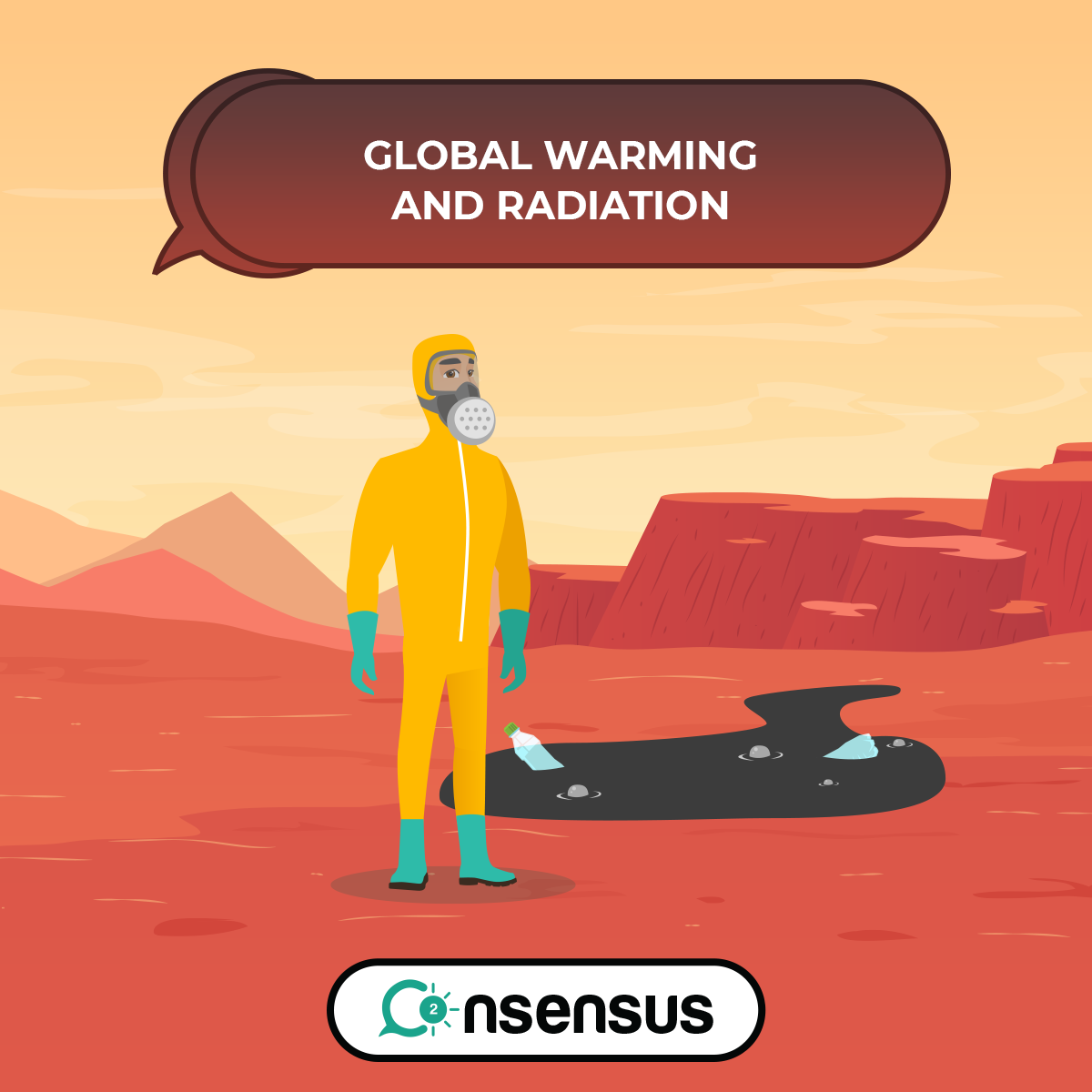The sun radiates energy in all directions. Most of it dissipates into space, but the tiny fraction of the sun’s energy that reaches Earth is enough to heat the planet and drive the global weather system by warming the atmosphere and oceans. The delicate balance between the amount of heat Earth receives from the sun, and the heat that Earth radiates back into space makes it possible for the planet to sustain life.
Solar radiation is created by nuclear fusion reactions in the sun’s core, which causes it to emit a large amount of electromagnetic radiation, mostly in the form of visible light. This radiation is the energy that heats the Earth. The sun’s surface emits about 63 million watts of energy per square meter. By the time the energy reaches the Earth, after traveling 150 million kilometers, or 93 million miles, it has diminished to 1,370 watts per square meter at the top of the atmosphere directly facing the sun.
Electromagnetic radiation, including visible light, infrared radiation, ultraviolet light and X-rays, can travel through the vacuum of space. Other forms of energy require a physical medium to move through. Solar energy, however, can travel from the sun to the Earth without the need for a physical substance to transmit the energy. This feature of electromagnetic energy makes it possible for the Earth to receive solar energy, including heat.
Some of the solar energy that arrives at the Earth bounces off the atmosphere and clouds and back into space. The surface of the Earth receives about half of the incoming solar radiation. The solar energy takes the form of heat and visible light as well as ultraviolet rays.
The rate at which energy from the Sun reaches the top of Earth’s atmosphere is called “total solar irradiance” (or TSI). TSI fluctuates slightly from day to day and week to week. In addition to these rapid, short-term fluctuations, there is an 11-year cycle in TSI measurements related to “sunspots” (a part of the Sun’s surface that is temporarily cooler and darker than its neighboring regions).
The Sun’s effect on global warming can mostly be attributed to variations in the near-infrared and visible wavelengths of solar radiation. These types of radiation are absorbed by the lower atmosphere, oceans, as well as the land. While the UV radiation, on the other hand, interacts strongly with the ozone layer and the upper atmosphere. Though UV solar radiation makes up a smaller portion of the TSI than infrared or visible radiation, UV solar radiation tends to change much more dramatically over the course of solar cycles.
The impacts of UV solar radiation may be substantial. Since UV radiation creates ozone in the stratosphere, the oscillation in UV levels can affect the size of the ozone hole. Absorption of UV radiation by the ozone also heats up the stratosphere. Many scientists suspect that changes in stratospheric temperatures may alter weather patterns in the troposphere. Finally, an increase in the amount of UV radiation could impact human health, increasing the incidence of skin cancer, cataracts, and other conditions.
If the Earth constantly received solar energy without any means of losing energy, it would continually grow hotter. The Earth radiates heat back into space, preventing the planet from overheating. The amount of reradiated heat is sensitive to the type of gases in the atmosphere; some gases absorb heat more effectively than others and interfere with re-radiation. One of these gases is carbon dioxide. As atmospheric carbon dioxide concentrations increase, the Earth’s heat budget is altered, with more energy stored in the atmosphere and less heat radiating back into space, a phenomenon known as the greenhouse effect.
Earth’s energy budget accounts for the balance between the energy Earth receives from the Sun, and the energy the Earth radiates back into outer space after having been distributed throughout the five components of Earth’s climate system and having thus powered Earth’s so-called heat engine. This system is made up of earth’s water, ice, atmosphere, rocky crust, and all living things.
The radiation that is received is unevenly distributed over the planet because the Sun heats equatorial regions more than polar regions. Earth is very close to being in radiative equilibrium, the situation where the incoming solar energy is balanced by an equal flow of heat to space; under that condition, global temperatures will be relatively stable. Globally, over the course of the year, the Earth system—land surfaces, oceans, and atmosphere—absorbs and then radiates back to space an average of about 340 watts of solar power per square meter. Anything that increases or decreases the amount of incoming or outgoing energy will change global temperatures in response.
However, Earth’s energy balance depends on many factors, such as atmospheric composition, mainly aerosols and greenhouse gases, the reflectivity of surface properties, cloud cover and vegetation as well as land use patterns.
Thus the increased accumulation of greenhouse gases contributes towards global warming, which is responsible for changing the Earth’s radiation balance by absorbing long-wavelength radiation, thereby increasing the overall temperature of the Earth.
